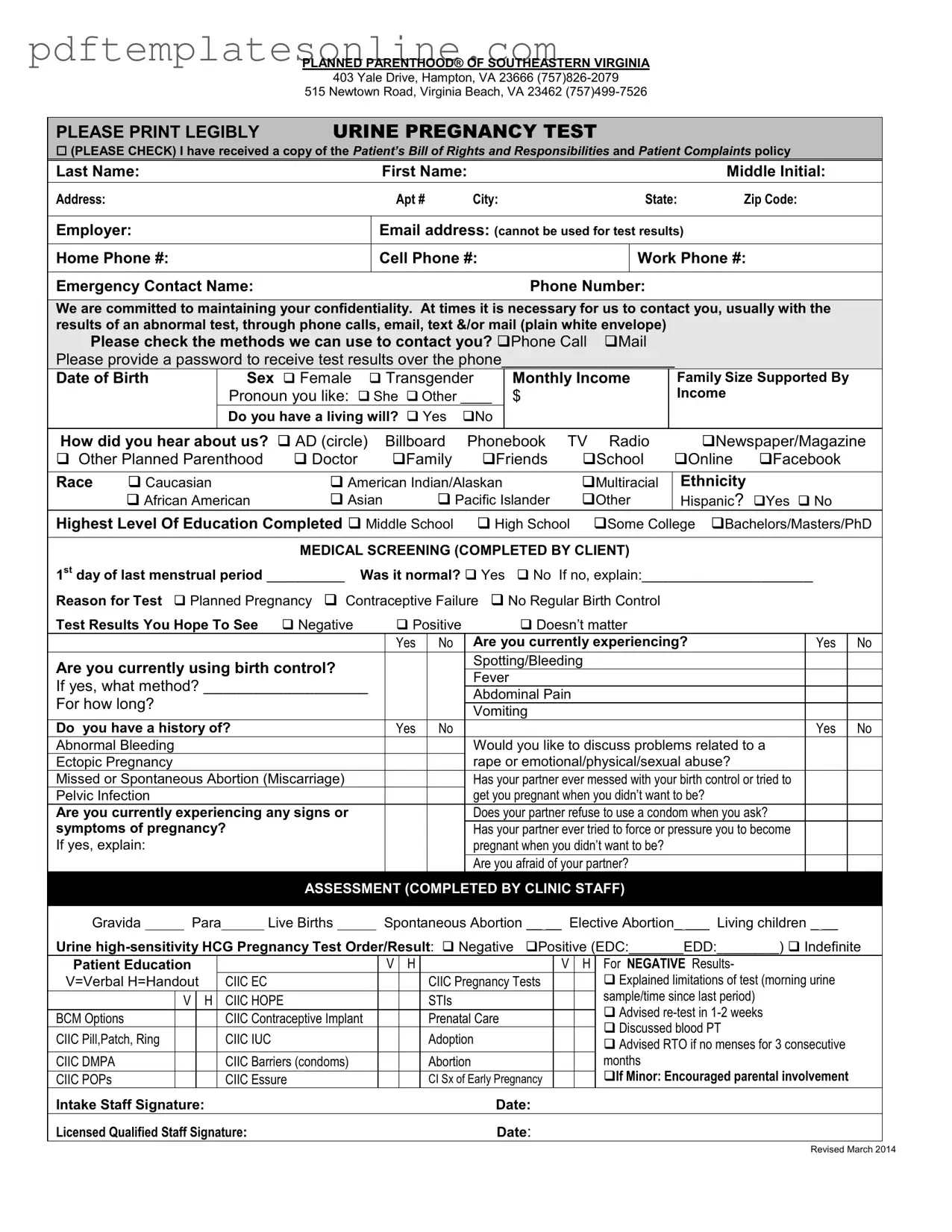Filling out the Planned Parenthood Proof form can be a straightforward process, but several common mistakes may hinder its effectiveness. One frequent error is not providing complete contact information. This includes omitting phone numbers or email addresses. Since the clinic may need to reach out regarding test results, incomplete contact details can lead to missed communications.
Another common mistake is failing to check the appropriate boxes regarding communication preferences. Patients often overlook indicating how they prefer to be contacted, which can complicate the delivery of important information. Ensuring that these preferences are clearly marked helps streamline the process and maintains confidentiality.
Additionally, many individuals neglect to provide a password for receiving test results over the phone. This password is crucial for verifying identity and ensuring that sensitive information is shared securely. Without it, there may be delays in receiving results.
Many people also make the mistake of not clearly stating the reason for their test. The form includes options such as "Planned Pregnancy" or "Contraceptive Failure," but some patients leave this section blank. Clearly identifying the reason helps the clinic tailor its services to meet specific needs.
Another frequent oversight is not providing accurate medical history. Patients sometimes skip questions about past pregnancies or any history of abnormal bleeding. This information is vital for the clinic to assess health risks and provide appropriate care. Inaccuracies can lead to misunderstandings and inadequate treatment.
Some individuals also forget to indicate their preferred pronouns. This detail is essential for ensuring respectful and accurate communication. Leaving this blank can create confusion and impact the overall experience at the clinic.
Finally, many people do not take the time to read the consent and acknowledgment sections thoroughly. Understanding the implications of the consent is critical. Patients should ensure they comprehend the information before signing, as this can affect their rights and responsibilities regarding their healthcare.
